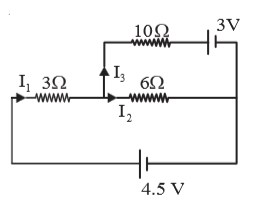In an electrical circuits, the voltage, E, in volts, the current, I, in amps, and the opposition to the flow of current, called impedance, Z, in ohms, are related by the equation, E=IZ. What is the impedance, in ohms, of an electrical circuit that has a current of (3+i) amps and a voltage of (−7+i) volts?
−2+i
1−2i
−1125−15i
−1625i
The correct Answer is:A
To find the impedance Z in ohms of the electrical circuit given the current I=3+i amps and the voltage E=−7+i volts, we can use the relationship E=IZ. Rearranging this gives us:
Z=EI
Step 1: Substitute the values of E and I
Substituting the given values into the equation:
Z=−7+i3+i
Step 2: Rationalize the denominator
To simplify this expression, we need to rationalize the denominator. We do this by multiplying both the numerator and the denominator by the conjugate of the denominator, which is 3−i:
Z=(−7+i)(3−i)(3+i)(3−i)
Step 3: Calculate the denominator
Calculating the denominator:
(3+i)(3−i)=32−i2=9−(−1)=9+1=10
Step 4: Calculate the numerator
Now, calculating the numerator:
(−7+i)(3−i)=−21+7i+3i−i2
Since i2=−1, we have:
−21+10i+1=−20+10i
Step 5: Combine the results
Now we can combine the results:
Z=−20+10i10
Step 6: Simplify the expression
Dividing each term in the numerator by 10 gives:
Z=−2+i
Thus, the impedance Z of the electrical circuit is:
−2+i
---
Since i2=−1, we have:
Topper's Solved these Questions
- PASSPORT TO ADVANCED MATHBook:ENGLISH SATChapter:PASSPORT TO ADVANCED MATHExercise:Grib-In
Explore 29 Videos
- PASSPORT TO ADVANCED MATHBook:ENGLISH SATChapter:PASSPORT TO ADVANCED MATHExercise:EXERCISE
Explore 80 Videos
- PASSPORT TO ADVANCED MATHBook:ENGLISH SATChapter:PASSPORT TO ADVANCED MATHExercise:EXERCISE
Explore 80 Videos
- PARAMETRIC EQUATIONS Book:ENGLISH SATChapter:PARAMETRIC EQUATIONS Exercise:EXERCISES
Explore 3 Videos
- PIECEWISE FUNCTIONSBook:ENGLISH SATChapter:PIECEWISE FUNCTIONSExercise:EXERCISES
Explore 8 Videos
Similar Questions
Knowledge Check
The figure below shows current in a part of electric circuit. The current i is
 A1.7AB3.7AC1.3AD1A
A1.7AB3.7AC1.3AD1AIn the circuit shown, the value of currents I1,I2andI3 are
 A3A,−3A2A,92AB92A,−32AC5A,4A,−3AD7A,54A,92A
A3A,−3A2A,92AB92A,−32AC5A,4A,−3AD7A,54A,92A
The figure below shows current in a part of electric circuit. The current i is

View SolutionWhat is the value of current I in the following circuit?

View SolutionIn an AC circuit, the rms value of the current Irms is related to the peak current I0 as
View SolutionThe value of the current I1,I2andI3 flowing through the circuit given below is

View SolutionFind the current I1, I2, & I3, in the circuit.

View SolutionWhat is the value of current I in given circuits
(a)_S01_050_Q01.png)
View Solution

